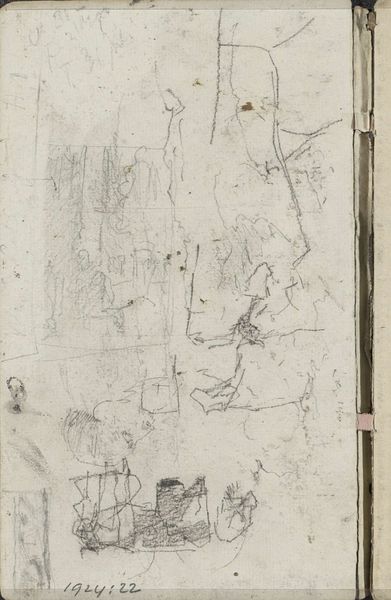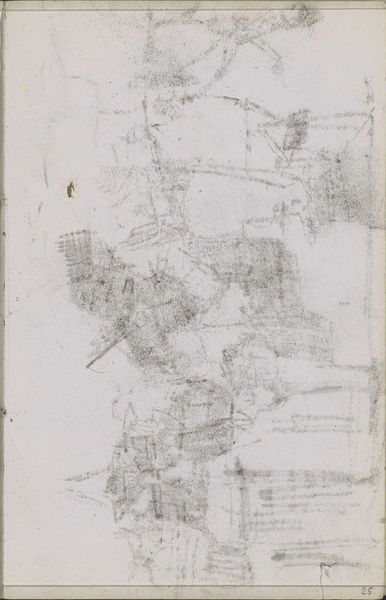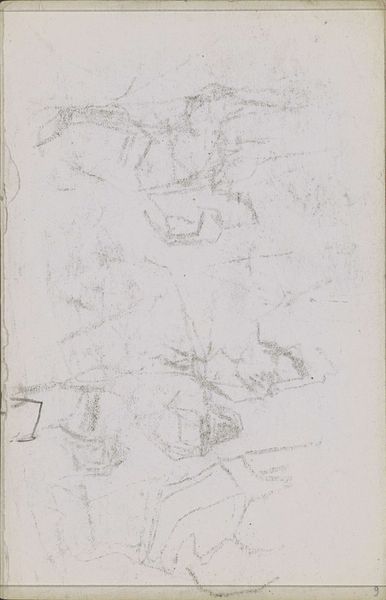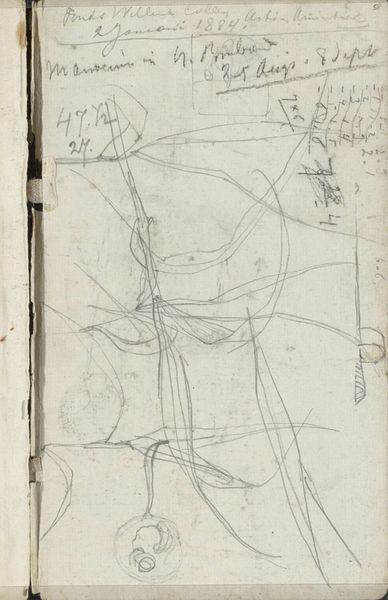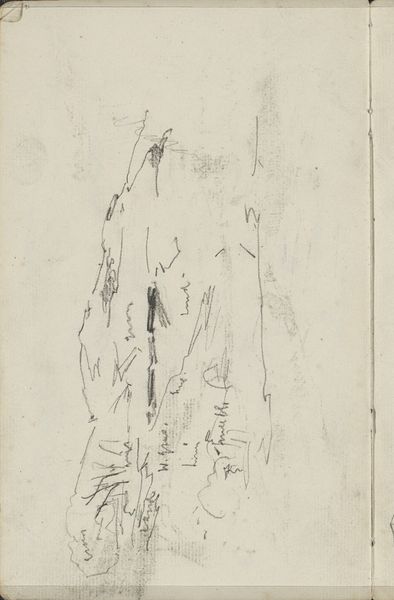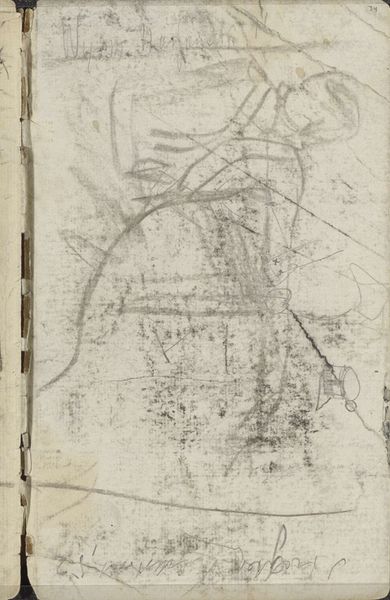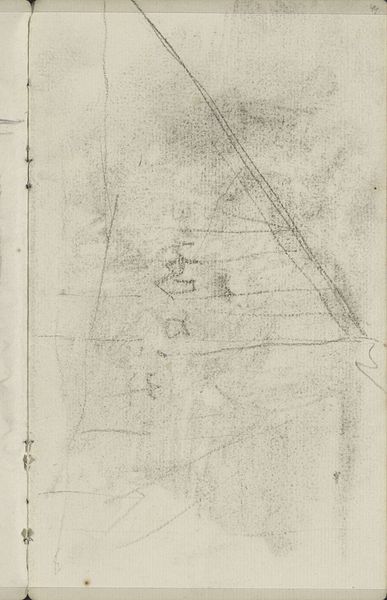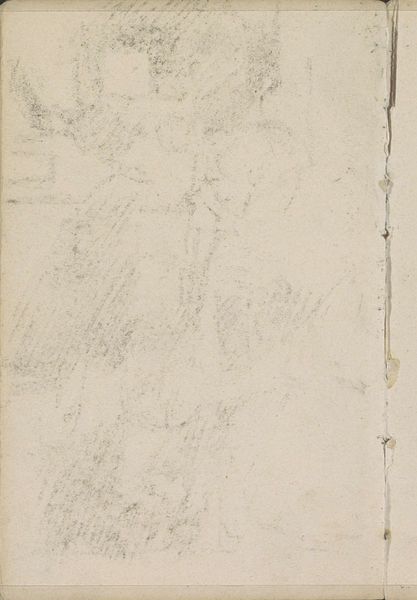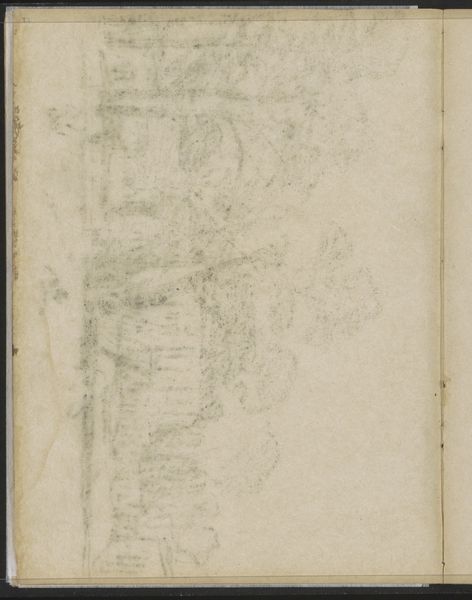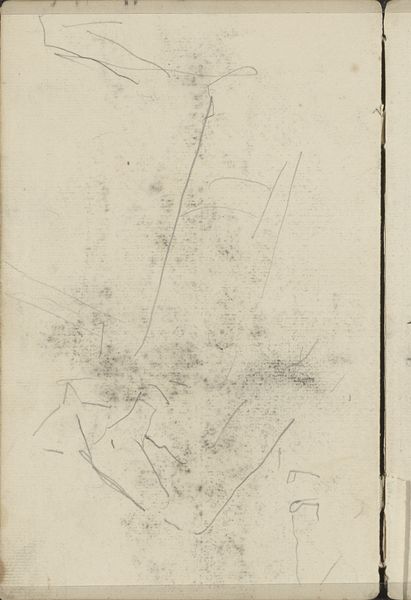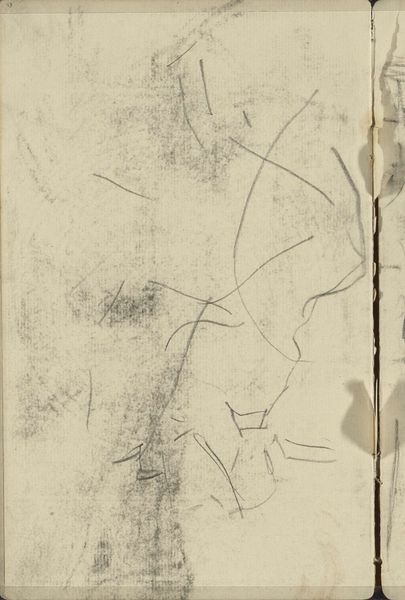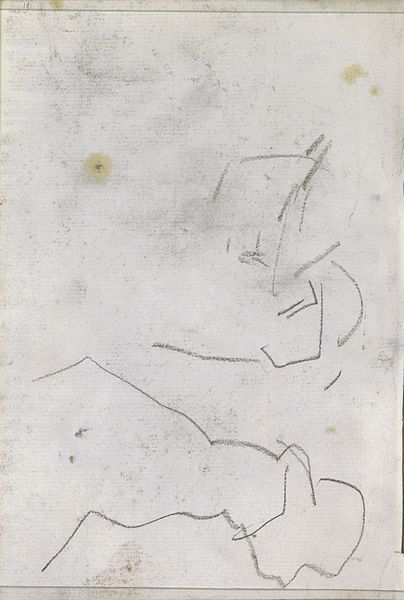
drawing, paper, pencil
#
portrait
#
drawing
#
impressionism
#
pencil sketch
#
landscape
#
figuration
#
paper
#
pencil
Copyright: Rijks Museum: Open Domain
Editor: Here we have Breitner’s "Figuurstudie" from around 1884 to 1886, a pencil drawing on paper currently held at the Rijksmuseum. It feels very preliminary, a quick sketch. What strikes you about this work? Curator: I see the labor inherent in this preparatory sketch. Consider the material reality: pencil lead, its composition, the quality of the paper, likely mass-produced. These weren’t luxury materials. The roughness invites questions about artistic production itself: was this a commissioned piece leading to a painting? Editor: So, you see it as part of a larger production process, not just as a finished artwork in itself. Curator: Precisely. We must ask, who was the intended audience for this kind of sketch? Was it ever meant for public consumption, or was it solely a tool within the artist's labor? It makes us reconsider the division between ‘high’ art and the working processes involved in its creation. Editor: It does blur those lines, showing the artist’s hand and the bare bones of creation. The lack of finish seems almost intentional, exposing the process. Curator: It is revealing. Also, consider the social context. Breitner was known for depicting the working classes. How might this quick sketch reflect his engagement with labor and everyday life in Amsterdam at the time? The subject of the drawing becomes less important than the act of sketching itself within a specific socio-economic landscape. Editor: That reframes the sketch entirely! Seeing it not just as a preparatory work, but as a document of both artistic and social labor changes my perception of it. Curator: Indeed. And it reminds us to value the often unseen, material underpinnings of art.
Comments
No comments
Be the first to comment and join the conversation on the ultimate creative platform.
